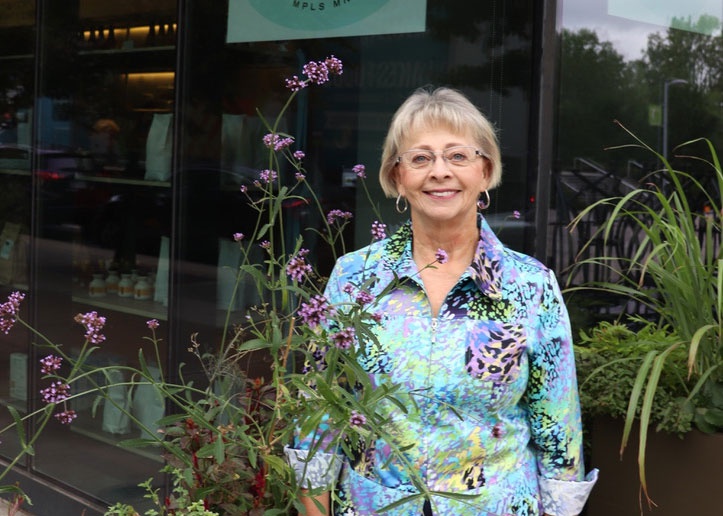Minnesota's Build Back Better Stories
Linda Larson has been an advocate for rural Minnesota her whole life. Growing up on a family farm near Ruthton in southwestern Minnesota, Larson has never forgotten how much the land means to her. “Physically, I left rural Minnesota but mental and spiritually, I never did.”
Through her involvement with the Farmers Union, she has helped carry the voices of the community she loves. “The people who are actively farming don’t have the time to go to the State Capitol or Washington DC or to advocate in a lot of ways for the policy that supports them, and I do, and so that’s how I use my time.”
Extreme Weather & Farming
Serving as Dakota County President at the Farmers Union, Larson feels strongly about helping farmers through the many hurdles climate change continues to bring. Events like this summer's drought greatly affected Minnesota’s farmers, and Larson realizes the importance of preparing farmers. “The USDA, as well as the Minnesota Department of Agriculture, are going to need to develop the ability to be flexible for the climate experience we are facing,” says Larson.
One of the biggest challenges Minnesota farmers faced this summer was selling their livestock because they didn’t have any pasture. “I know three families who sold their multi-generational dairy operations this year. They didn’t have enough alfalfa to feed them, and the cost of importing alfalfa from the south was cost prohibitive. They just couldn’t do it,” says Larson.
Equipping Farmers for Climate Change
Working smarter for climate solutions, Larson stressed the importance of looking into different ways to equip farmers with sustainable options. “I think there are ways we can advance our solar and renewable energy that wouldn’t require taking tillable soil out of production by creating multipurpose solutions.” Larson also pointed out as technology is constantly changing, farmers have been able to find creative methods for adding solar panels to their land, such as placing them on the roofs of barns or even the middle of a pond. Other farmers have taken the surrounding ground around the panels to plant a pollinator-friendly garden that attracts more insects and birds that can eat agricultural pests, helping protect crops. Steps towards smarter solutions for climate like these can help prepare farmers for the future as well as contribute to the health of their land and the earth.
Another climate solution Larson mentioned is planting a perennial crop like Kernza® on exposed ground, preventing runoff that can cause erosion. Steps like these can help the longevity of soil, preserving it for years to come. With climate resilient solutions like these, farmers can start to prepare their land for the extreme weather events associated with climate change. Groundcover in the case of drought can help lock in some of the soil’s nutrients helping keep crops healthy and in heavy rain events it prevents rapid erosion.
Larson also pointed out that these are long-term solutions, and at first, they may seem challenging to introduce. “Studies have shown that in the first two years a farmer has planted a cover crop they will see a slight reduction in their harvest year, so by the third year they start to break even, and then they start to see increases.” Incentive programs would help offset any losses.
Supporting the Future of Farming
Working toward these solutions helps farmers prepare for climate change and preserve their soil for future generations. But to do this, we need to get serious about giving farmers the resources they need and support the new faces of farming. “There are lots of ways people can farm, be good stewards of the land, feed the people, and restore the planet,” says Larson. As the growing threat of climate affects our land, supporting restorative solutions, like Kernza®, are essential to the future of agriculture in Minnesota.

